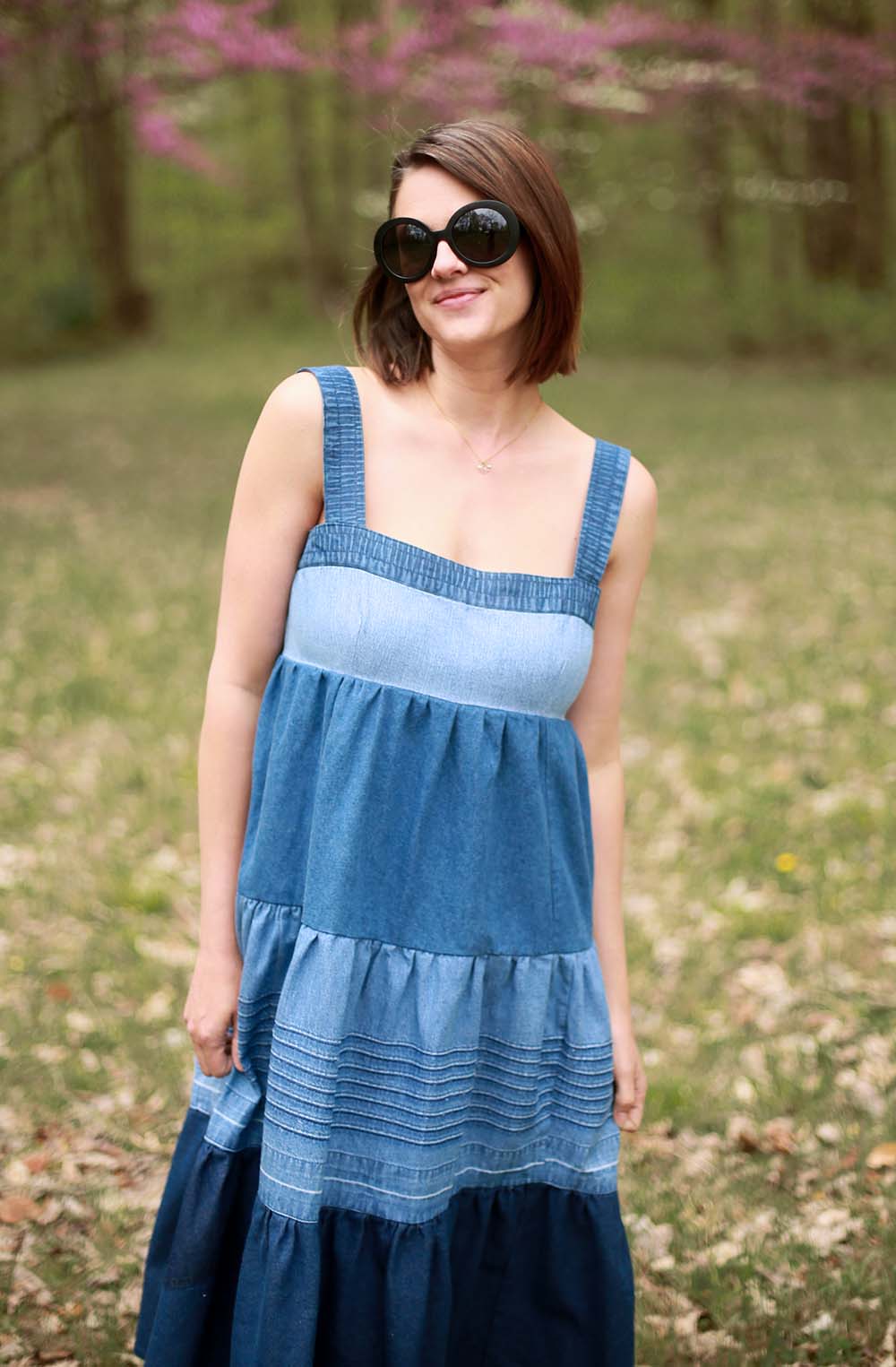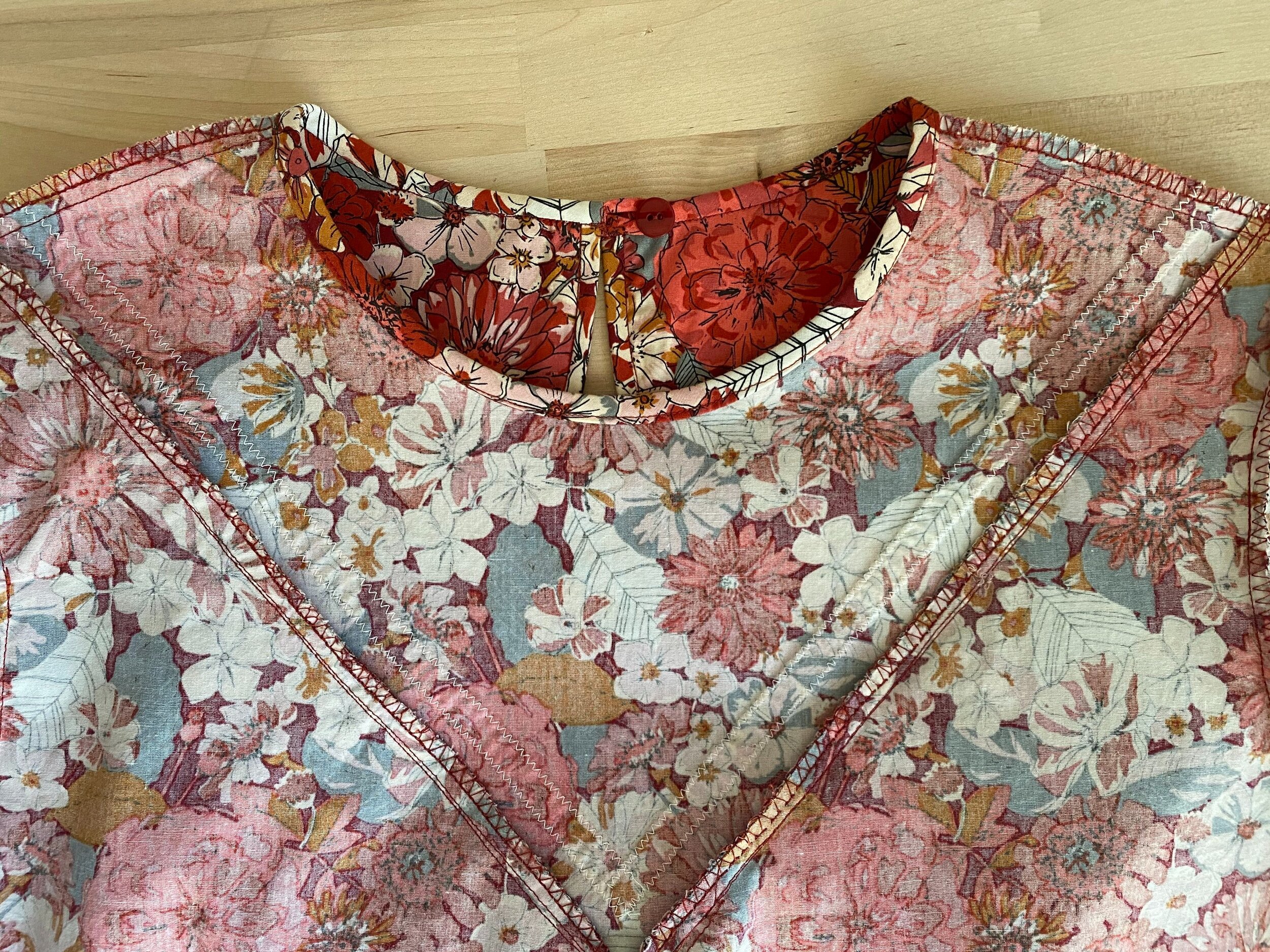Download and print my free mask pattern at 100%. You can double check you have the correct size by measuring the 1” square at the top of the pattern. This has been sized for an average adult woman. If you have a larger face, cut a little outside the pattern to make it bigger. The pleating will help customize the mask further (you may choose to omit it all together)
(For the body of my mask I used ‘Fleuron’ in Sanctuary from the Kismet collection designed by Sharon Holland for Art Gallery Fabrics.)
Cut FOUR of your main pattern piece (be sure you cut 2 lefts and 2 rights). Cut elastic into TWO 6.5” lengths. Cut TWO 2” wide bias strips, 9” long.
Sew center seam with 1/4” seam allowance to create FRONT and BACK. Press, trim and notch.
Lay elastic on RIGHT side of FRONT. Pin in place.
Place FRONT and BACK with RIGHT sides together and stitch 1/4” from edge. Turn RIGHT side out and press.
Fold bias WRONG sides together and press.
Lay bias RIGHT SIDES TOGETHER on the top of the FRONT side of your mask (if you’re using the same fabric for FRONT and BACK, it won’t matter which side you apply your bodice to). You should have bias extend over side edges so we can turn under and create clean edge.
Stitch 1/4” from edge. Press open.
Trim sides to 1/2” and turn under. Now turn bias over the seam and under. Press.
Stitch in the ditch (the area between bias and FRONT).
Repeat bias application on bottom of mask.
Now we’ll make small pleats on each side of the mask. Try on and create a small pleat with the fold pointing down, like this. Pin in place and top stitch to secure.
Optional: Insert a small wire over the bridge of your nose. I rip these out of disposable masks but you can also use the wire twist tie from a load of bread. Because they’re coated, I still throw my mask in the wash (daily!) without issue.
If you’ve enjoyed this tutorial or know someone who might, please share!



























